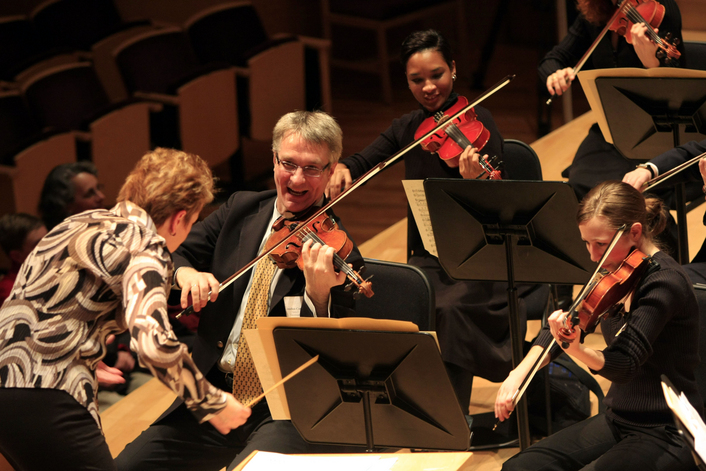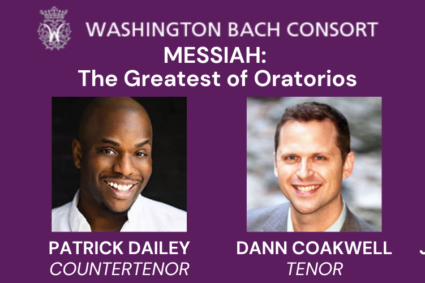
Baltimore Symphony Orchestra led by Marin Alsop presented the rarely performed Gustav Mahler’s Sixth Symphony in its entirety Thursday night at The Music Center at Strathmore. The symphony is believed to be Mahler’s best work. The composer portrays himself as a hero who tragically meets his end in a thunderous finale.
Mahler often used a protagonist tone to convey his music. An expression of a hero battling and winning the battle. The hero almost taking an autobiographical tone of the composer. In the Sixth Symphony, the “hero” in this instance is tragically slain in the final movement. It was like committing intellectual suicide. Mahler and his wife Alma believed it was a premonition of the composer’s own death. Mahler even went as far as omitting the third and final “blows of fate” from the program superstitiously fearing it marked the end of his own life. The “blows of fate” are thunderous hammer blows that resemble the sound of a tree falling. They mark the moment the hero has felled. Mahler’s health started to declined shortly after writing the symphony and he died of heart disease two years later in 1907.
This reminds me of two composers, Mozart and Richard Strauss. Mozart believed he was writing his own funeral when he wrote “Requiem in d minor” and Richard Strauss refers to himself as a hero in his tone poem “A Hero’s Life.” I don’t know if Mahler had a premonition of his death or if he just got wrapped up in his own story. Music is made to stir emotions. He was writing a tragedy so of course; he’s going to take on that character. It’s interesting, though, maybe the stress and emotional toll the symphony took on the composer contributed to him contracting heart disease. This brings up an interesting subject about music and health. I strongly believe music plays a contributing factor to your overall mental and physical well-being and Mahler’s 6th symphony is an example of that. Negativity begets negativity. He did write the 5th, 6th, and 7th symphony all around the same time period, but the 6th symphony seems to be the one he was most engaged with. Talk about suffering for your art.
The orchestra had an interesting arrangement. Double basses were placed in the rear of the orchestra instead of to the right. The orchestra includes flutes, piccolos, oboes, English horn, clarinet, bass clarinet, bassoon, contrabassoon, horns, trumpets, trombones, tuba, timpani, violins, violas, and cellos. There was also a celesta, two harps and all sorts of interesting percussion. It was an ornate orchestra, to say the least. I have to credit conductor Marin Alsop; it wasn’t a typical ensemble. It took a lot of orchestral knowledge to put this program together.
One of the percussion instruments was a large wooden box. It was used for the “blows of fate.” It was struck with a long handle mallet. The first time it was struck it caught the whole audience completely off-guard. The thunderous boom startled everybody. That’s one way to get everybody’s attention. Along with the large wooden box, there were more unusual percussion instruments. There was a stand with all sorts of oddly shaped bells. It was used to make the tinkling sound of cowbells resembling the spirit of the valley. It was interesting hearing these bells. They sounded like they were coming from all different directions. I was looking behind me to see if there was a percussionist on the balcony.
Marin was extra expressive with her conducting. This symphony was written in the style of chamber-like music played by a mass orchestra. So it demands a lot of technique out of every musician. Marin had to be extra expressive because there were a lot of swift transitions and mood changes taking place. She remained loose but incredibly decisive with her gestures. Everything sounded spectacular, particularly the horns section! They played a prominent role in this symphony.
This was a great performance my favorite part was the sound of the celesta which looks like a mini upright piano. It creates a beautiful sound which almost resembles a harp. It was a trance inducing, dream-like sound. I guess that’s why it’s called a celesta. It’s interesting hearing it accompanied by the orchestra. Incredible performance!


